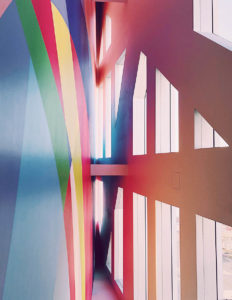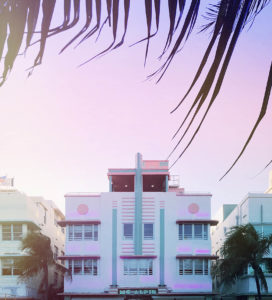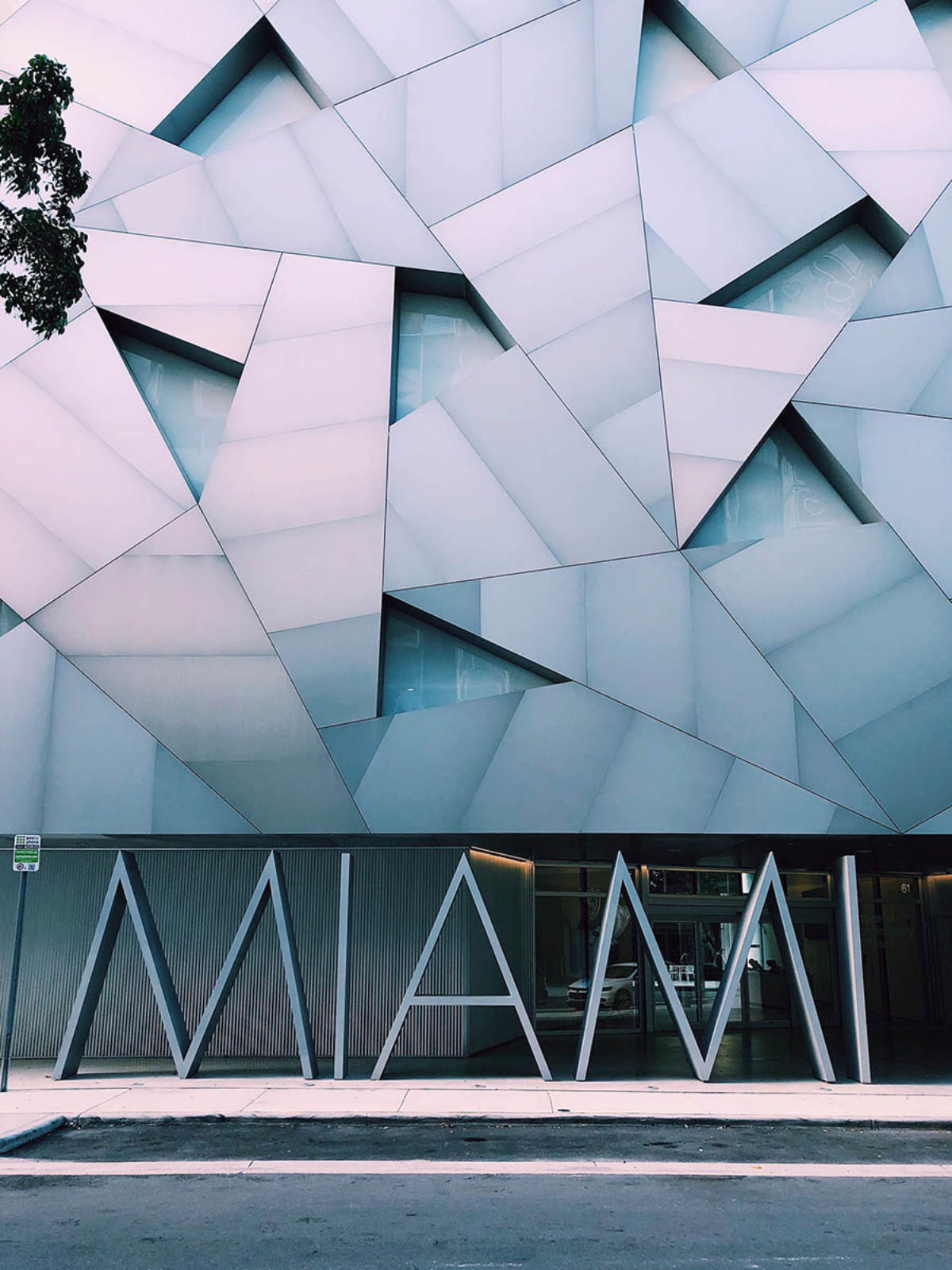The sunset orange that frames “Multiple Miamis” gradually deepens as the exhibition progresses, a gesture that its curators hope is both evocative and objective—a tropical palette appropriate for Miami, but that resists prioritizing any one of the range of ideas and projects presented. As its name suggests, the exhibition presents Miami as the site of multiple overlapping cities grappling with a complex network of social issues.
“Multiple Miamis,” now on view in the Frances Loeb Library, follows a Harvard Graduate School of Design option studio by the same name, led by Sean Canty and Chris Reed. The studio took up a tale familiar to the American city—neighborhoods reshaped by decades of redlining and segregation, often leading to disinvestment and disrepair—and examined how this narrative has played out in the Miami neighborhood of Overtown.

“The studio and exhibition present an opportunity to focus on a set of issues that are relevant to many large-scale American and global cities today,” Reed says. “And even though we took on some tough social issues, the key was to do so through the tools that designers have.”
The “Multiple Miamis” exhibition draws from the studio’s months of dialogue and design iteration, punctuated by a week-long site visit in October, 2018, in which students met with local government officials, community organizations, and residents. Canty and Reed curated the exhibition alongside two of the studio’s participating students, Ting Liang (MLA/MAUD ’19) and Zishen Wen (MLA ’19).

Like the “Multiple Miamis” studio, the exhibition explores questions of inequity, race, affordability, and resilience, and how policy and the built environment shape or complicate them through housing, transit, and other infrastructure. The studio examined in depth how models of urban development might better support underserved communities.
Near the downtown area, Overtown is home to a predominantly black population and has one of Miami’s lowest median household incomes. Overtown’s cultural fabric was torn by two interstate highway projects in the 1960s. Today, the effects of real estate speculation and boom in greater Miami, coupled with a warming climate and subsequent sea level rise, have compounded the pressures faced by the neighborhood.
It’s a pattern that emerges throughout the Miami area, in inland neighborhoods like Little Haiti, Liberty City, and Allapattah, and in other American cities facing questions of affordability and displacement. When juxtaposed with Miami’s rosier, palm-tufted representations, these patterns can generate a complicated, even distorted reality.
The “Multiple Miamis” studio’s output takes varied approaches to these questions, pursuing ideas that respond specifically to Overtown’s—and Miami’s–context and culture, but that might be applicable to other regions or cities.
The installation’s entrance wall greets viewers with a showcase of study models, revealing glimpses of the studio’s process and iteration as participants steeped themselves in Overtown’s historical and current social issues.

“It’s an entire display of possibilities,” Reed observes, embedded with quintessentially Miami details. Dominant themes include the hybridization of building, landscape, and infrastructure types—affordable housing or a parking garage mixed, for instance, with a park in a unified project.
Several projects look at how to densify and diversify housing choices on existing sites, some of which have been individual and privately-owned, others larger and publicly-owned—but with an emphasis throughout on providing useful, productive outdoor spaces, taking advantage of Miami’s favorable year-round climate. Many of these housing-driven projects also respond to today’s evolving, often hybridized family configurations and living situations.
Other emergent themes include resilience in the face of climate change, as well as a rethinking of housing as a public good rather than as a market-dictated commodity. Transit also looms large in “Multiple Miamis”: Several projects propose extending transit lines or establishing new transit stops, orienting the additions as the center of a redevelopment strategy. Transit options not only become closer and more accessible to users, but can be leveraged to create new, connective open spaces, as well as housing and mixed-use opportunities.

“Since the studio really leveraged different parts of the school, there’s a little something for everyone to look at and think through,” Canty says.
Liang and Wen proposed “Ephemeral City,” which holistically examines Overtown’s physical fabric, then recontextualizes it within a more urbanistic framework. This embeds the neighborhood with “ephemeral moments,” Liang says, that are in tune with social needs.
The studio’s models generate a physical and pedagogical constellation that illustrates the diversity of disciplinary approaches. As viewers move through the installation, they follow the studio’s conceptual progress, reaching final models at the show’s rear wall. A third component presents policy and reading material culled from the studio’s concurrently run urban planning and design seminar, led by Lily Song.
While “Multiple Miamis” grapples with heady, pressing issues, it also suggests that collaborations between design fields is integral to enhancing urban equity and resilience.
“In gathering and discussing work during such an interdisciplinary studio, I grew much more open to new ideas and was able to generate new possibilities for solving such persistent issues,” Liang says. “From philosophy to methodology, there’s always so much to learn from other fields.”
Keep reading about the course Multiple Miamis: Infrastructure, Affordability, Identity & the Public, learn more about the exhibition “Multiple Miamis,” or watch a work-in-progress video about Ting Liang and Zishen Wen’s “Ephemeral City.”
